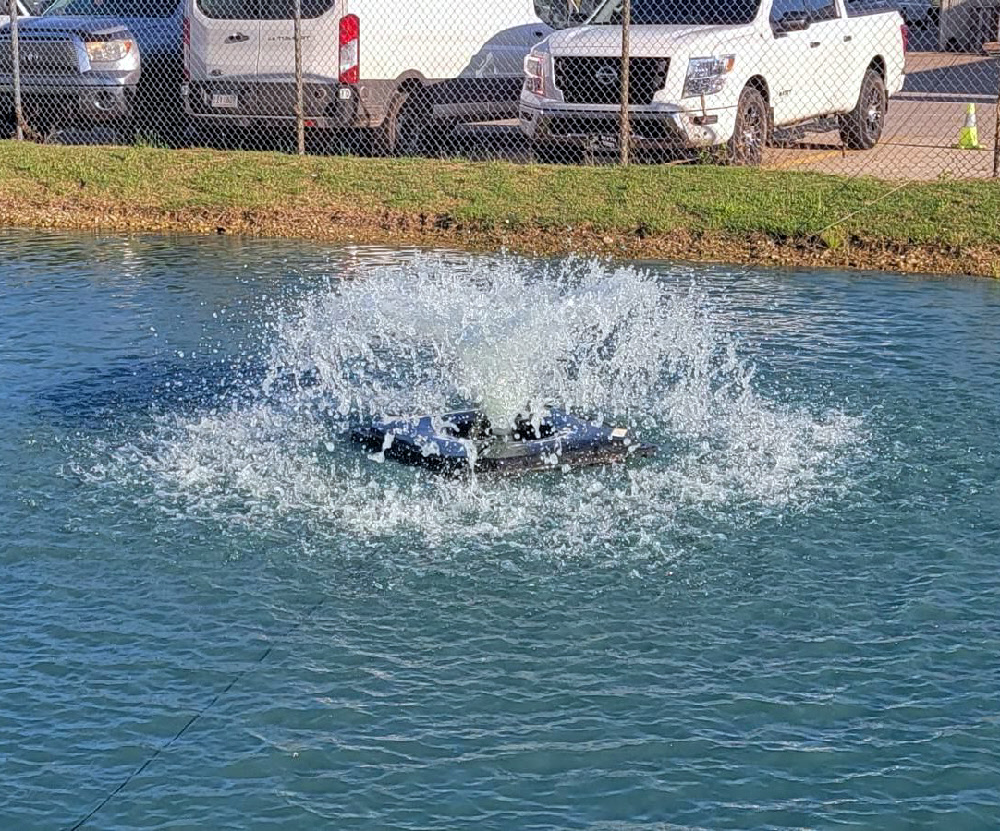
Custom Search
|
Algaecides & Bacteria | Deicers & Bubblers | Weed Removal | Liquid Bacteria | Pond Pumps & Fountains | Aeration | Winter Pond Care | Algae Control | Pond Liner | Muck Pellets | Build a Solar Aerator | Rotary Vane Compressors | Floating Fountains | Building a Pond | Linear Air Compressors & Pumps | Weighted Airline | Diffusers & Airstones | Bacta-Pur Bacteria | Solar Aeration Systems | DC & Battery Operated Pumps | Windmill Aeration | Dock Bubbler Packages | Building a Waterfall | Dyes & Colorants | Consultations | Questions & Answers | Links & Resources | Eurasian Milfoil | | Mosquito Control | Pondkeeper Treatments | Aeration Systems | Septic Bacteria | Grease Trap Blocks | Compost Aeration | Dissolved Oxygen Meters | SOTR & Pumping Rates | Duckweed Control | Pond Plans & Pond Building Books & Guides || News on Ponds | Pond Pictures | Pond Care Strategies
| Calculating
Dissolved Oxygen Levels in Ponds & Lakes Understanding the rate of oxygen transfer a diffuser can deliver Whenever the question of installing an aeration system comes up I am inevitably asked how much oxygen will be delivered by the aerator. Of course this is a standard question because the amount of oxygen being delivered in to the water is critical if there are fish in the pond or if it is an aquaculture system with a certain number of pounds of fish per tank or per square meter. Each diffuser has a different transfer of oxygen level and if we are installing diffuser discs with medium sized bubbles or are using airstones with micro-bubble sizes that are less that 1 mm per bubble then it can make a huge difference.
Let's take an example that even my Uncle Jimmy could understand: Jimmy has a 4 acre pond and is thinking of adding a 3/4 HP rotary vane compressor with 4 airstone diffusers and I think that it would likely be fine considering he has a few deep sections near the dam that are at least 8 feet deep. I have to say to Jimmy: "I'm no scientist but let's put this formula in the form of a chart so you can dwell and swell over the numbers! No Jimmy...I ain't calling you out...but if you can understand this chart then I owe you fifty bucks!" For the creatures of the Earth that inhale and breathe air a level of oxygen that is around 21 percent is required to support life but in ponds, lakes and aquaculture waters aquatic life is often supported in water that contains less than 0.0001 percent oxygen, which is equal to 10 mg/l. With such a small amount available in even the best of aquatic ecosystems it is understandable why every aquculturist, serious koi or gold fish owner, or even anyone interested in maintaining a fish pond or a healthy water body should understand, measure and record the various seasonal changes of the dissolved oxygen to ensure fish health and pond clarity. If the oxygen level is too low, get yourself a pond aerator if this is the case, your fish may stop eating and become lethargic and will expend extra and unavailable energy trying to find their food...but at the same time if the oxygen levels are too high then it can also be a catastrophic fish-kill. At both extremes there can be extreme fish stress and even death to aquatic life if the O2 levels surpass critical thresholds. Using a dissolved oxygen meter will allow you to regulate and understand how your pond is evolving and when changes need to be made to adjust the pH, temperature or aeration efficiency of your system you will be able to quickly react! I always tell the municipal lake-managers, pond owners and the homeowner associations that I work for that they must take ownership and responsibility of their pond or lake. It is the same with the small backyard fishpond! The daily 24-hour cycle, sometimes called the diurnal cycle, of oxygen addition and reduction in a pond should be well understood because as you probably already know there is a delicate and fragile balance between the existing dissolved oxygen in any pond or lake or water-garden versus the absolute rate of oxygen consumption and this fluctuating level can be altered by the shifting algae growth cycles, temperatures and even the prevailing wind directions! In your outdoor ponds there will be lower dissolved oxygen levels in the height of the summer months, during June, July & August especially because during the warmer months the overall rate of oxygen consumption in the pond will increase as temperature increases. This is why the most important thing to monitor will be the oxygen level. The combination of monitoring your oxygen as well as other chemical and elemental parameters of your pond combined with accurate record-keeping will provide extremely useful and predictive knowledge for the years to come as you deal with changing environmental systems and patterns.
If you want to really get technical then the bottom line is that it takes way more than just bubbles to correctly aerate a pond or lake. When the oxygen levels are low you should be able to expect a transfer performance of up to 10 pounds of dissolved oxygen per HP per hour, this is using the standard rate so coveted by engineers! Most pumps, water moving fountains and air bubblers are actually rated at less than 2 pounds per horse power per hour. But as we have found these ratings are often inaccurate because most O2 transfer happens at the surface and not in the mechanical mixing or aerating. Bubbles from diffusers tend to expand and spread out as they rise from the bottom to the surface. The volcanic like mounting of water that is pulled within the bubbles from one of our synergistic diffusers rise at a rate that averages about one foot per second moving around 2,000 gallons per minute from the area above the diffuser assembly. In comparison, a simple PVC pipe drilled with 1/64" holes will only move 200 gallons per minute on average with the same 1/3 HP piston compressor that delivers 3 CFM! Email us with your questions
For efficient oxygen transfer use diffusers and airstones with high pumping rates and small bubbles
Recommendations for : For more information on pond aeration visit the following ten pond aeration websites. Please note that we are not specifically endorsing any particular way of treating ponds or any particular business. Due diligence in all things! 1. Water Quality - Calculating the percent saturation is another way to analyze dissolved oxygen levels. Percent saturation is the measured dissolved oxygen www.cotf.edu/ete/modules/waterq3/WQassess3f.html 2. Dissolved Oxygen and Water Quality - A good level of dissolved oxygen Is essential for aquatic life. ... As dissolved oxygen levels in water drop below 5.0 mg/l, aquatic life is put underwww.state.ky.us/nrepc/water/wcpdo.htm 3. Dissolved Oxygen and Nutrients - Key Findings Report - NREI - Aquatic animals need dissolved oxygen to survive. If levels of dissolved oxygen become too low, many types of fish and other animals could www.mb.ec.gc.ca/nature/ecosystems/nrei-iern/dg00s06.en.html 4. Major Findings - Dissolved Oxygen - Northern River Basin Study - Winter is a critical time for dissolved oxygen levels. ... Dissolved oxygen levels rarely dip below the Alberta surface water objective of 5 www3.gov.ab.ca/env/water/nrbs/sect3/sect38.html 5. Science Junction - Water What Ifs - Dissolved Oxygen Lessons - Decreases in the dissolved oxygen levels can cause changes in the ... Dissolved oxygen levels change and vary according to the time of day www.ncsu.edu/sciencejunction/depot/experiments/water/lessons/do/ 6. Canadian Water Quality Guidelines for the Protection of Aquatic - Dissolved oxygen levels in aquatic environments can. affect the persistence and bioavailability of some. chemicals. For example, the persistence in water of ceqg-rcqe.ccme.ca/download/en/178/ 7. Dissolved Oxygen Meters, Portable Meter - Cole-Parmer Catalog - METTLER TOLEDO's Dissolved Oxygen Sensors to monitor your processes.- Dissolved oxygen meters are analytical instruments that are used to measure the amount of oxygen dissolved in a liquid sample. www.coleparmer.com/Catalog/product_index.asp?cls=46612 8. Hanna Instruments Dissolved Oxygen Meters - Meters for Laboratories · Meters for Schools & Colleges · Swimming Pools Spa's & Hot Tub Testing ... You are here: Hanna Catalogue > Dissolved Oxygen Meters www.hannainst.co.uk/acatalog/Dissolved_Oxygen_Meters.html 9. Pond and water garden test kits, test ammonia, pH, nitrites ... - Pond Test Kits testing pH, Salt, Dissolved Oxygen, Ammonia, Nitrites, Nitrates, & More ... They're made in the USA, Available meters are oxygen meters - Dissolved oxygen concentration in ponds fluctuates on a 24-hour basis. .... Dissolved oxygen can be monitored using an electronic oxygen meter or chemical www.pondsolutions.com/test-kits.htm 10. Pond Aeration For Healthy Koi Ponds - In smaller fish/ koi ponds aeration is usually achieved when water ... Although a bit pricey, a dissolved oxygen meter is one of the best - Dissolved Oxygen Meter - Waterproof pH tester - Salinity Meter ... The meter is extremely easy to use; simply turn it on and dip into your Koi pond - Disolved Oxygen Meter Dissolved oxygen metering is an important application test if efficiently maintaining koi ponds where oxygen levels are important to www.pondbiz.com/home/pb1/smartlist_323/h2o_test_kits__meters.html
Compare Pricing of Dissolved Oxygen Meters For Ponds and Lakes When comparing oxygen it is a good idea to look for forums and reviews that discuss the pros and cons of various battery operated and AC supply dissolved oxygen meters and check to see if they include a deep-water probe or any probe with a 6 to 12 foot cable or more. Since the principals of oxygen measurements are scientific and many companies offer products that do basically the same thing to various degrees of efficiency then it is up to us as consumers to use our due-diligence before buying a oxygen meter or DO meter. To compare prices with our recommended meters we have grouped some of the more popular scientific and hobby dissolved-oxygen meters brands together for comparison with our own most used systems. Dissolved Oxygen Meters Using a dissolved oxygen meter is the most accurate way to ensure your pond is getting the oxygen it requires to remain healthy. Our Selection of Dissolved Oxygen Meters & Scientific Equiptment are now listed on Amazon  As an Amazon affiliate we may recieve payment for purchases made through Amazon. HANNA OXY-CHECK WATERPROOF DISSOLVED OXYGEN METER Measurements in the field can subject the instrumentation to the inclemency of the weather. Cold, rain, snow, dust and humidity associated with use in the field can cause condensation, which may damage the meter, rapidly deteriorating its performance and life. HI 9147 is designed for outdoor applications, especially wastewater treatment and fish farming. Quick response through the galvanic D.O. probe. Backlit Display. Simple on-site calibration requires no chemical solutions. HI9147 also supplies the user with compensation (manual) of salinity and altitude factors and automatically compensates for the temperature effect. Range 0.0 to 50.0 mg/L (ppm) O2 0-600 % O2 -5.0 to 50.0°C Resolution 0.1 mg/L or 1% O2 0.1°C Precision +/- 1% of the reading O2 +/- 0.2°C Typical EMC Deviation +/- 2% of the reading O2 +/- 1°C Temp. Compensation Automatic from -5 to 50.0°C Calibration Manual in Air Probe (Fixed) HI 76409/4 with 4m Cable or HI 76409/15 with 15m Cable Battery 1 x 9V, Ni-MH, Rechargeable Battery Life 200 Hours of continuous use (without backlit) Auto-Shut Off After 6 Minutes of Non-Use Environment 0 to 50.0°C, RH 95% Max Dimensions 164 x 76 x 45 mm Weight 511 g HI 9147-04 is supplied complete with HI 76409/4 D.O. probe with 4 m cable, 5 spare membranes, 2 O-rings, protective cap, HI 7042S electrolyte solution (30 ml), Protective Rubber Boot, Screwdriver, rechargeable 9 volt battery and instruction manual in a rugged carrying case. . Available at: https://www.dynamicaqua.com 9200 Dissolved Oxygen Meter IP67 The Model 9200 is a fully specified unit combining ease of use and robust construction. Utilising a Clark type polarographic membrane electrode optimised for both speed of response and the ability to withstand the rigours of portable use, dissolved oxygen measurements can be made either as % saturation or as concentration in mg/L (ppm). The DO2 sensor incorporates a precision temperature measuring device which determines and displays the temperature of the analyte and automatically corrects for the changes in membrane permeability and oxygen solubility which occur with variations in temperature. Calibration is a simple push-button operation carried out in the % saturation mode with clear instructions given via the graphics display. The sensor measures the partial pressure of oxygen and the reported results are influenced by atmospheric pressure and depth, unless appropriate compensation is made. The standard 9200 allows these values to be entered through the menu options. The 9200 is equally at home in the laboratory environment and is suitable for B.O.D. (Biolchemical Oxygen Demand dtermination. The optional B.O.D probe and associated components are designed to faciltate the 5 day B.O.D. test as defined in ISO 5815. The kit includes adaptors, allowing use with the many B.O.D. bottle configurations commonly available. High quality waterproof connectors (to IP67) allow rapid interchangeability of electrodes, whilst maintaining waterproof integrity. The connector incorporates a locking ring to guard against accidental disconnection or ingress of moisture. Power is provided by 3AA size batteries giving typically 100 hours of use. An operator selectable auto shut-off feature ensures battery life is maximised. Automatic low battery warning is given when remaining battery life is approximately 5 hours (@ 20°C). . Available at: https://www.hannainst.co.uk Oakton ® Waterproof DO 300 Meter Stones Dissolved oxygen (DO) readings are displayed in mg/L, ppm, or % saturation simultaneously with temperature values. Adjustable backlit display makes it easy to view readings in low light levels. Calibrate at the independent 100% and 0% calibration points to achieve high accuracy over the entire range. Increase reading accuracy by entering salinity and barometric pressure—meters automatically calculate offset. Setup function displays electrode slope, zero offset, and millivolt values. Real-time clock stamps stored readings and calibration data with date and time, making it ideal for Good Laboratory Practice (GLP) standards. Additional features include selectable °C or °F temperature units, HOLD function, ready indicator, and auto-off for battery conservation. IP-67 waterproof and dustproof housings float Perfect for harsh, rugged field conditions Memory stores 50 readings with corresponding temperatures and time Galvanic probe allows you to take measurements immediately Percent saturation resolution 0.1% Percent saturation accuracy ±1.5% full scale Temp resolution 0.1°F 0.1°C Temp accuracy ±0.5°F ±0.3°C Temp range 32.0 to 122.0°F 0 to 50°C Temp compensation automatic from 0 to 50°C Salinity compensation manual from 0.0 to 50.0 ppt, 0.1 ppt resolution Barometric pressure compensation manual from 500 to 1499 mm Hg/ 66.6 to 199.9 kPa; 1 mm Hg/0.1 kPa resolution Available at: https://www.coleparmer.ca/ Techne Range of DO2 Dissolved Oxygen Meters by Jenway Model 970 is a low cost hand held unit that is rated IP65 for portable use. The Model 9200 Dissolved Oxygen Meter is designed and constructed to resist the harshest of field, laboratory and industrial environments. The whole system is waterproof to IP67, and if dropped into water will float. These products are ideal for on-site water quality measurement in a multitude of customer applications. The 9200 utilizes a Clark type polarographic membrane electrode optimized for both speed of response and the ability to withstand the rigors of portable use. The Model 9150 DO2 Meter is part of our Premier Portable range. The Model 9150 Dissolved Oxygen Meter is designed and constructed to resist the harshest of field, laboratory and industrial environments. The whole system is waterproof to IP67, and if dropped into water will float. These products are ideal for on-site water quality measurement in a multitude of customer applications. The Model 9500 DO2 Meter is a bench top laboratory Meter. The Model 9500 is a fully specified dissolved oxygen meter that includes full support for the B.O.D 5-day test protocol. Powerful data logging capabilities are included with the ability to store up to 250 results plus 20 B.O.D. tests (up to 10 samples per test) either manually, at timed intervals or alarmed events. Remote monitoring and data collection is facilitated by the provision of both analogue and digital outputs and in the event of power removal all user defined parameters are retained. Available at: aeratorsaquatics4lakesnponds.com Email us for information or with your questions.  Pond
Report Store Pond
Report Store
The pond report also has information on: Algaecides & Bacteria | Deicers & Bubblers | Weed Removal | Liquid Bacteria | Pond Pumps & Fountains | Aeration | Winter Pond Care | Algae Control | Pond Liner | Muck Pellets | Build a Solar Aerator | Rotary Vane Compressors | Floating Fountains | Building a Pond | Linear Air Compressors & Pumps | Weighted Airline | Diffusers & Airstones | Solar Aeration Systems | DC & Battery Operated Pumps | Windmill Aeration | Dock Bubbler Packages | Building a Waterfall | Dyes & Colorants | Consultations | Questions & Answers | Links & Resources | Eurasian Milfoil | | Mosquito Control | Pondkeeper Treatments | Aeration Systems | Septic Bacteria | Grease Trap Blocks | Compost Aeration | Dissolved Oxygen Meters | SOTR & Pumping Rates | Portable Generators | Duckweed Control | Pond Plans & Pond Building Books & Guides | © 2007 - 2024 The Pond Report about us | privacy policy | contact us |
|||||||||||||||||||||||||||||||||||||||||||||||||||||||||||||||||||||||||||||||||||||
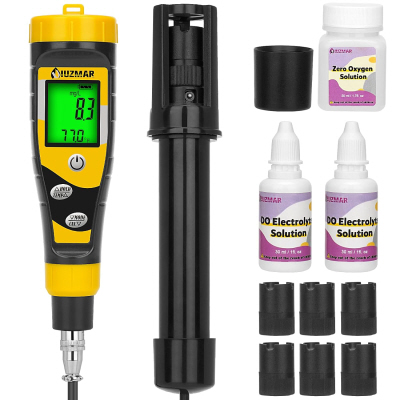 Dissolved
Oxygen DO Meter Kit
Dissolved
Oxygen DO Meter Kit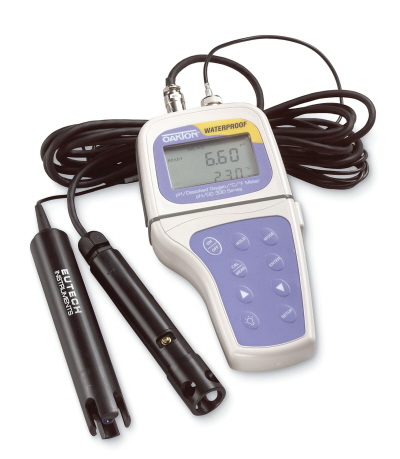 Oakton
Dissolved Oxygen Meter with Probe
Oakton
Dissolved Oxygen Meter with Probe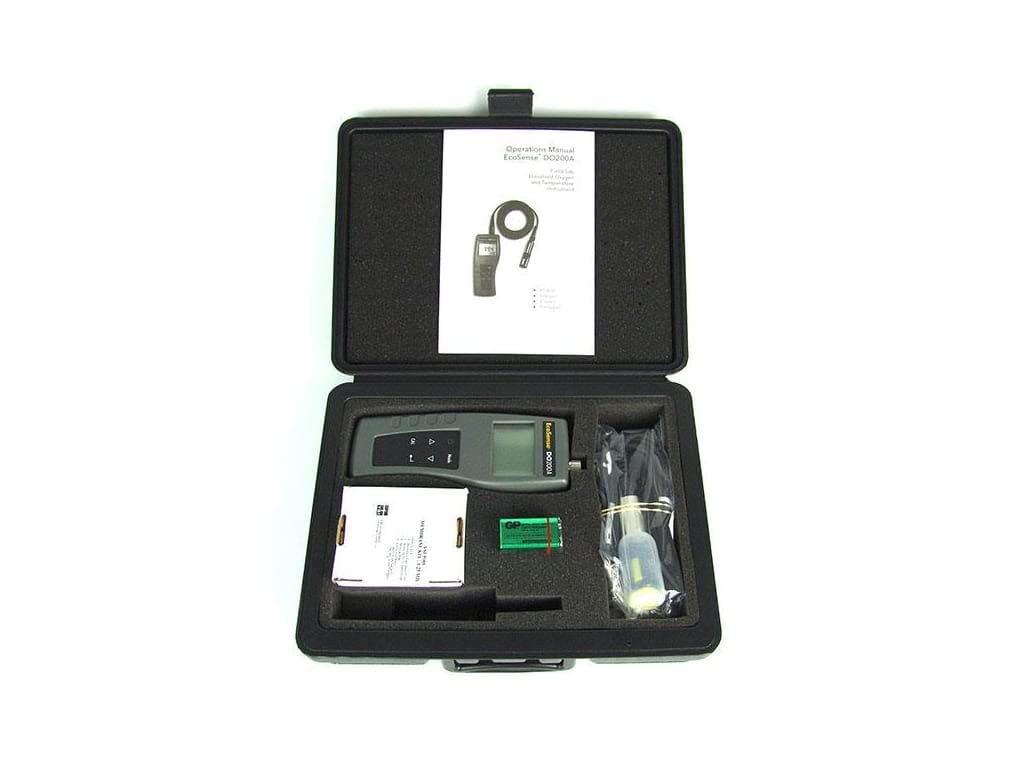
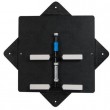
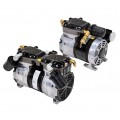
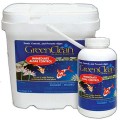
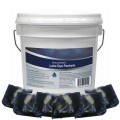
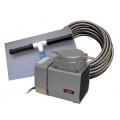
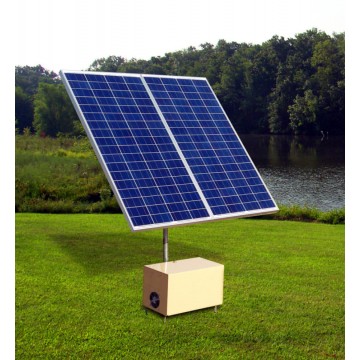 Solar
Direct Drive 12 Volt DC Solar Aeration Systems
Solar
Direct Drive 12 Volt DC Solar Aeration Systems